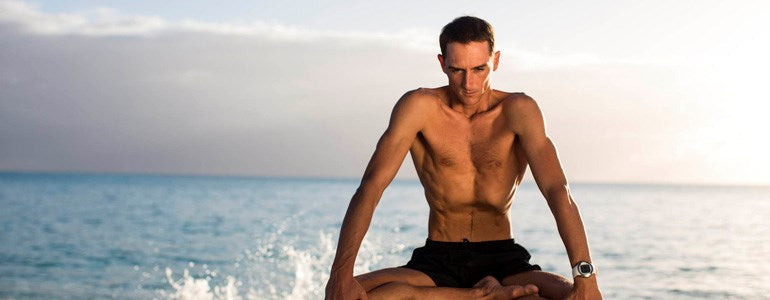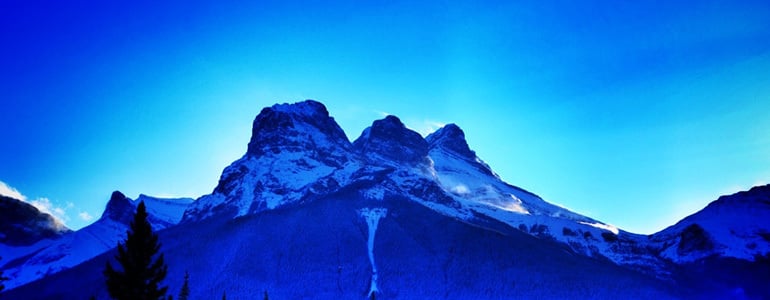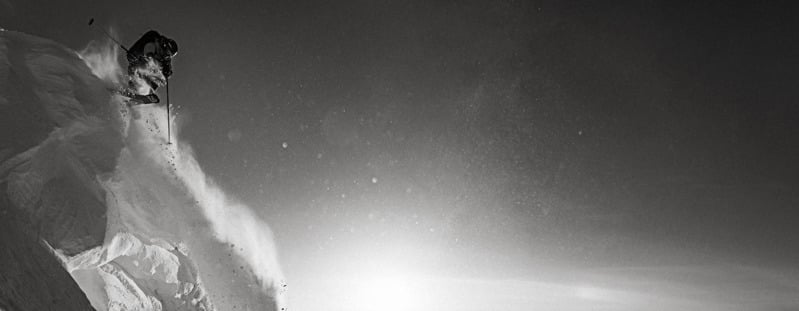

Suunto Blog

Infographic: What happens when you go deep?
What happens to the body when you go deep? This infographic explains some of the physiological changes that the body goes through on a dive. But one thing it can't explain – and that's the feeling.
Says Will Trubridge: “I love freediving because it's an opportunity to escape from gravity, sound, light (if you go deep) and even the sensation of time passing. A deep freedive can be like a dream, in that all the rules of reality seem changed.”
Dive in below to discover more about the sport, the physiology and the different disciplines...
infographic created by: zooom.at/Adi Sumic
The Dive Reflex
It is often said that humans are perfectly adapted for diving underwater thanks to the 'mammalian or dive reflex' – something we share with other aquatic mammals such as whales and dolphins. The main feature of this is the way the heart rate automatically slows once the face is submerged in water to reduce oxygen consumption. The dive reflex kicks in again after approximately 25 m: the heart rate slows by as much as 50% and vasoconstriction takes place. This is where warm blood retreats from the body's extremities to protect core organs.
At this depth most divers can stop swimming. “Here I have lost enough buoyancy from lung shrinkage under pressure that I can stop swimming and freefall for the rest of the descent,” says Will.
Freediving Disciplines:
There are three main depth disciplines in competition freediving: Constant Weight No Fins (CNF): The freediver descends and ascends without any assistance (only using arms and legs without fins).Constant Weight with Fins (CWT): The freediver descends and ascends using fins/monofin and the use of arms.Free Immersion (FIM): The freediver dives without the use of fins/monofin, but pulls a rope during descent and ascent.Says Trubridge: “CNF and CWT are the two most popular disciplines. CWT gives the deepest performances, while CNF is seen as the purest expression of human aquatic potential. FIM is more of a relaxed discipline, but there are definitely some very serious practitioners there as well!”

TRACKING BACK WITH AN AMBIT
Last August Estonian ski mountaineer Argo Mere attempted to ski down 7,546 m high Muztagh Ata on the northern edge of the Tibetan Plateau in China. Unfortunately the weather conditions didn't make reaching the summit easy: Mere and his group had already spent two nights at camp 3 at 6,800 m but the weather stayed poor.
“We were waiting for an opening to continue to the top, but zero visibility and continuous snowfall blocked the way up,” he says.
Finally the team decided to turn back.
“On the human side, nothing was left undone but nature wasn’t in our favor this time,” he says.
Descending in a total white-out wasn’t easy either.
“Since I was the only one on skis I had problems waiting for the others. Looking at the track now I can see that somehow I turned too much right.”
Once Mere realized he was off track – and too close to the big cliffs (dark on the map on skier's right) – he decided to escape back up the same way he had skied down.
“I put my skins back on, turned my Suunto to Trackback and managed to return to the right track and also found my friends.”
Mere says they found their previous camp thanks to his Ambit’s Track back function.
“Yes, it was quite adventurous and nice that a 'gadget' turned to something vital in returning,” he adds.
HOW TO TRACK BACK WITH AN AMBIT
In the story above Argo Mere used the Ambit’s Track back function. With Track back, you can retrace your route at any point during an exercise.
To track back during exercise:
While you are in a sport mode, keep [Next] pressed to access the options menu.
Press [Next] to select NAVIGATION.
Scroll to Track back with [Start Stop] and select with [Next].
You can now start navigating your way back the same way as during route navigation.
During navigation, press [View] to scroll the following views:
The full track view showing the whole route
Zoomed-in view of the route. (By default, the zoomed-in view is scaled to a 200 m/0.125 mi scale, or larger if you are far away from the route. You can change the map orientation in the watch settings under GENERAL / Map.)
Waypoint navigation view
You can read more about navigation in your watch’s user guide. The user guide for your product can easily be found in register after you have registered your product in the same location.
NOTE: If the GPS accuracy setting of your sport mode is Good or lower, while navigating GPS accuracy switches to Best. Battery consumption is therefore higher.
You can get support for your Suunto product at support
Main image ©John Hill / Flickr

Winter is coming: is your body prepared?
Matthias Scherer and Tanja Schmitt are two of the most active ice climbers in the world. How are they preparing their bodies for the upcoming season? By dry-tooling and cranking out sets of pull-ups and other drills in the gym, that's how. Below, they share some of their training secrets.
Dry-tooling“Drytooling means climbing with ice tools and crampons on rock,” says Matthias. “It's a very good physical preparation for ice climbing but should not be confused with ice climbing. Ice climbing is (like alpinism) all about the experience. You have to be willing to learn new things continuously and constantly adapt to the challenge the ice or the mountain presents. Matthias Scherer drytooling in Canmore, Canada. ©Tanja Schmitt
Many of the drytooling crags feature drilled holds. Drilled holds gives you the advantage that your tools will "stick" safely in the rock, so you can do athletic moves without the chance of popping your tool off – but you will not learn the skills how to scratch and place tools precisely on natural features. Those skills are primal when it comes to real mixed climbing. So new school drytooling on drilled holds is a great way to get physically fit, but it will not replace, or give any experience for ice or mixed climbing.”
Tanja Schmitt drytooling in Canmore, Canada. ©Matthias Scherer
“Our goal was to build core and arm strength Since we were able to climb a very athletic M9 10 times in one hour means that we achieved our goal!
Indoors – at the gymWhile the best form of training is the real thing, gym sessions are also important parts of any fitness regime. These are some of the drills that Matthias and Tanja perform. “Our training in the weight room has the unique goal to compensate the hard impact that drytooling has on the body. So we train the opposite muscles after each Drytool workout next day in the gym. The training does not take a long time, in fact it can be done in 40-60 minutes. 20 minutes of a warm-up is however essential! Basically we do three circuits consisting of 6 different exercises. Each exercise or “set” consists of 10-15 repetitions and two minutes rest between exercises.”
Matthias front lifting weights. ©Tanja SchmittOne circuit consists of:
Lateral Raises with adjustable dumbbells
Front lifting with adjustable dumbbells
Reverse butterly
Chin pulls with a barbell
Push ups
Hanging leg raise (straight and bent arm)
Tanja performing lateral raises. ©Matthias Scherer
A quick daily training routine during the whole year when the pair can not go climbing is:
3 x 30 pull ups - two sets on tools, one on hands3 x 30 push ups3 x 15 hanging leg raises3-5min rests between exercises. “In fact, we go on the slackline in between the sets, it's less boring.”

Couple depart on ultimate Nomad trip
Janick Lemieux and Pierre Bouchard are on the first leg of an epic cycle journey NOMADS² from northern Europe to the southern tip of South Africa in search of indigenous nomadic peoples. Janick Lemieux and Pierre Bouchard are no strangers to long cycle journeys. The Canadian couple previously spent six years on a 60,000 km 'cyclovolcanic' quest around the Pacific. For this trip, their plan is to cycle 35,000 km from Nordkapp Norway to Cape Agulhas, South Africa via 50 countries and dozens of nomadic groups. “We're embarking on an epic ride and a true voyage of exploration!”So far they've already cycled across Norway and encountered the Sami reindeer herders. “We snaked our way up north amidst its jaw-dropping fjords and celestial plateaus jutted with glaciated peaks and entered Sami (Lapland), traditional territory of the first nomads on our list, and were riding on the lookout for reindeer, their summer pastures and their herders,” the pair say in their latest dispatch.
Besides Norway, they've also cycled across Finland's wilderness. “It's a land of magnificent taiga forests speckled with a multitude of lakes, vital marshes, and vast expanses of tundra covering summits and upper reaches of tunturis or fells. Reaching some 800 m above sea level, the venerable bald ridges are the sole survivors of billion of years old lofty mountain ranges. With their abundant lichens and few mosquitoes, they provide ideal summer grounds for reindeer. It's been a real immersion in this amazing land,” they add. It's not just remote indigenous peoples whom the pair have met. They also managed time for an encounter with an equally engaging team of individuals – the workforce at Suunto's HQ in Vantaa, Finland. We wished them the best of luck in their onward journey.
Images: © Pierre Bouchard
Ueli Steck nominated for Adventurer of the Year award
Congratulations to Suunto ambassador, Ueli Steck who has been nominated for the National Geographic 2015 Adventurers of the Year award for his speed ascent of the south face of Annapurna. The award recognizes the amazing achievements of outstanding individuals in exploration, conservation, humanitarianism, and adventure sports in 2014.Steck’s solo climb of the 8,091 m peak took just 28 hours there and back – a feat that should normally take at least four days. He says it’s the biggest climb he’s ever done and admits he took too much risk to complete it. An avalanche hit him at 7,000 m and after that he accepted that he might not come back alive: “I was just climbing, totally accepting that it might be a one-way ticket,” he told the magazine.
Ueli Steck, photographed in Chamonix in 2013. ©Jon Griffith PhotographyObservers believe Steck has changed the face of modern mountaineering with his fast-and-light style. But he acknowledges that Annapurna was a once in a lifetime experience: “I don’t want to do a route like this again in this style.”So what’s next for “the Swiss Machine”: ‘I really love climbing. It’s like a living process. Right now I’m just focused on the 8,000-meter peaks. I don’t know what’s next. I don’t think I will get tired of climbing.”
Now is your chance to vote for Ueli to be the 'People's Choice' Adventurer of the Year. Last year it was won by Kilian Jornet. Let's make sure it's Ueli, the Swiss Machine for 2015.

March Madness, surviving an avalanche and his winter goals: Greg Hill shares all.
If there's one person who looks forward to the arrival of winter, it's Suunto ambassador Greg Hill. Last winter he pulled off the incredible feat of skiing 100,000 vertical meters in a month. But after breaking his leg in Pakistan this summer, he says he's looking to just hang and enjoy the mountains this winter. Below, he talks about his accident and how he can't believe he pulled off the March Madness project. Winter is coming. Excited? I love winter! I am apprehensive because I can't really say how it will go. I know I will need some boot work to ensure comfort with my newly healed leg. But I also know that my passion is still intact and ready for more adventures.
How's the leg? The leg is getting better every day, but still a long road ahead. I will be 90% at the start of the season but the last 10% will take me some time. As it stands I am walking with a slight limp and can go for short hikes.What happened? What happened was that I was overtaken by my desire for more. We had hiked up a great 5,500 m summit, that was previously unclimbed. Our line up was a decent line and would have made for a great descent. But my desire for exploration led me to try and ski a different line down. It was also a better line for filming. I liked the backdrop and figured it would look great on video. So because they were filming I skied it with less caution, since caution doesn't look as good as confidence on video.
Greg Hill doing what he does best – ski mountaineering in his local hills. ©Bruno LongAnd the lesson there? To stick to my way of skiing regardless of video. Safety is always first priority, not looking good on video. I sure didn't look good as the avalanche chased me down and took me out. Lots of people would say it was the law of averages but I seriously know that had I followed my typical rules I would have been fine.
March Madness was an incredible success. I guess you'd prefer to remember 2014 for that? Honestly, I can't believe I pulled that off, to think that I was able to average over 3,000 m up a day for a month is a little mind-boggling. Even though I did it, it's hard to imagine although I do know what drive and desire can do. Am psyched on the success of that month and can't wait to get back to 100% and onto another challenge.Recovery juice: Greg gets some home made smoothie down. © zooom.at/Markus Berger
What's been the recovery process?I have had physio 2-3 times a week, plus some swimming but also I have been road biking more than anything. Road biking is the best way to get my fitness back while also working on ankle movement and leg strength. The new Ambit3 Peak is a real motivator to push my fitness.What are your winter goals?I probably won't be able to pull off any extraordinary feats this winter but I will still seek out mountains I have not skied and adventures where I can. This accident has taught me a lot and I am keen on taking this learning and continuing to push myself in the mountains. My passion is still as strong as ever.Main image top: zooom.at/Markus Berger





























































